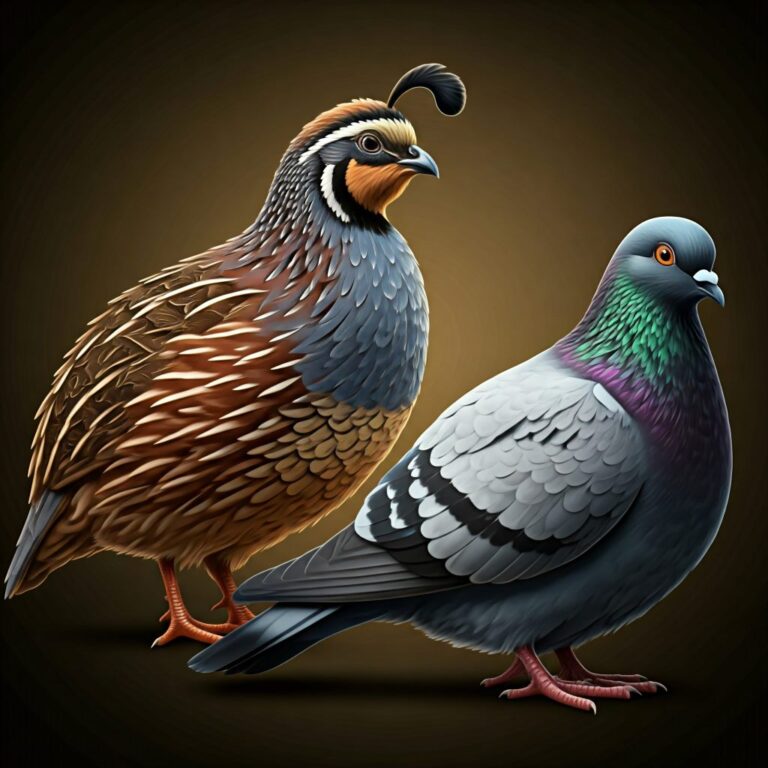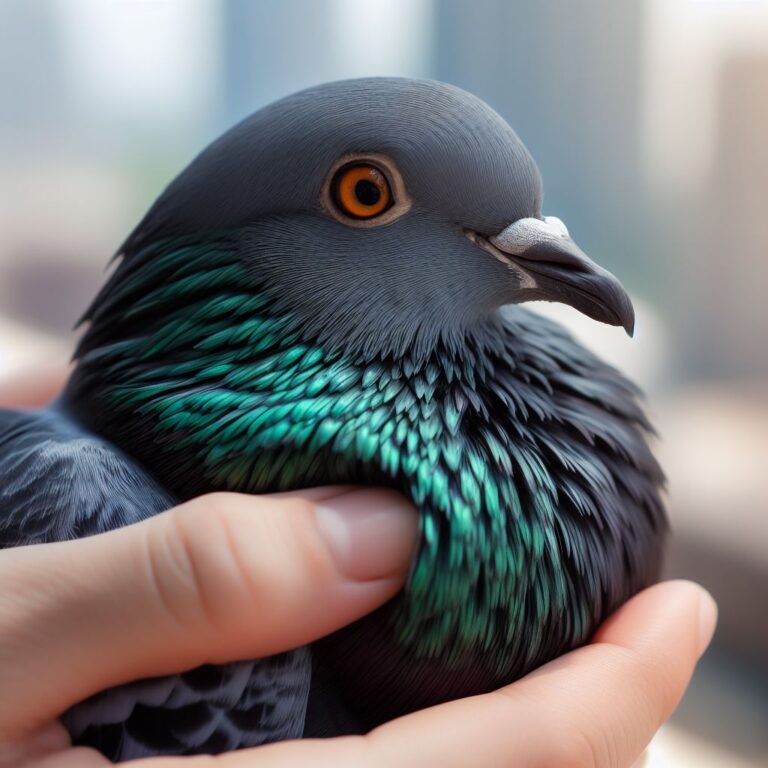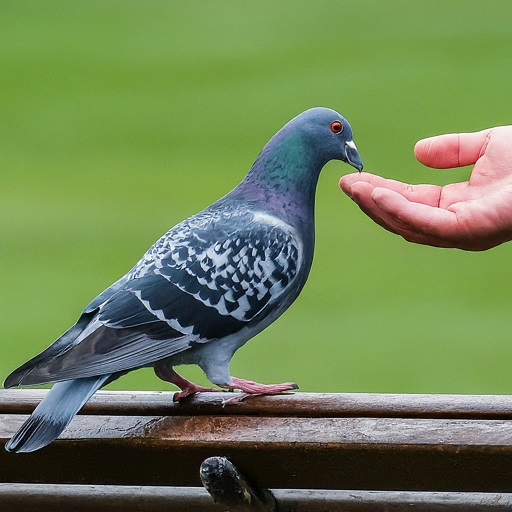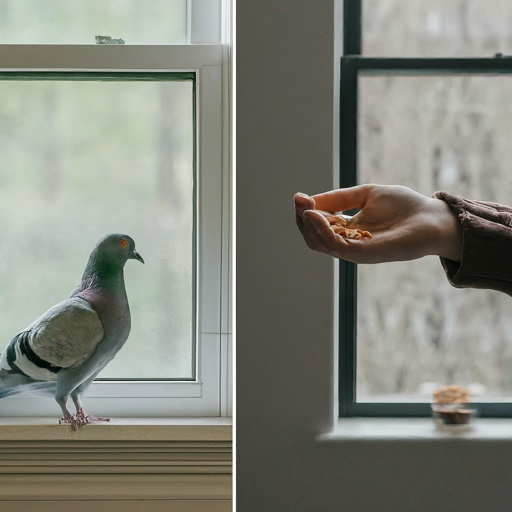Pigeon Found – What To Do If You Find A Lost Pigeon
Encountering a lost pigeon can be a surprising experience, but it’s essential to know how to handle the situation properly to ensure the bird’s safety and well-being. In this article, we’ll discuss what to do if you find a lost pigeon, including how to identify the bird’s needs, provide temporary care, and reunite it with its owner.
Identify the Pigeon:
Appearance:
Pigeons are medium-sized birds with stout bodies, short necks, and small heads. They typically have gray or bluish-gray feathers, although some pigeons may exhibit variations in color, such as white, brown, or black.
Leg Bands or Tags:
Check if the pigeon is wearing leg bands or tags, which may contain identification information such as a unique code or contact details of its owner. This information can help facilitate the bird’s return to its rightful owner.
The pigeon found should have a leg band, as this is fairly typical in pigeon breeding. Remember that the pigeon is frightened but his survival depends on someone’s kindness at this point. While he might run from initially, many found pigeons will look to a human they deem as safe for assistance.
Found pigeons have leg bands that mark their identity. Each tag is registered with a national pigeon association to help it find its owner in just such cases. Sometimes you can simply enter the tag ID into Google and you can bring back a direct hit.
In other cases, you will have to search out the tag ID with each individual website. While it may seem like a lot of effort to reunite a pigeon with his owner, you are saving a life and your kindness means the world to the little found pigeon in the box.
A found pigeon without a leg band is most likely wild, although a few have been reported to be overtly friendly, human-oriented, and lacking a display of flight skills, which can indicate a rare but untagged pigeon. If the pigeon found is wild, contact a rescue society that deals in rehabilitation rather than the humane league which is more likely to euthanize than expend resources to return the pigeon to the wild.
There are many websites that can offer advice for a pigeon found, and getting in contact with someone who can help you negotiate a found pigeon might be helpful for you. If the pigeon found looks like a fancy pigeon, one with unusual markings are body shape, chances are it came from your own neighborhood. Fancy pigeons do not fly great distances like a homing pigeon might.
A homing pigeon found in your backyard or on the street might have come from several hundred miles away. Sometimes homing pigeons become confused or lost due to a variety of issues, including poor training, lengthy test flights, and altered surroundings.
Assess the Pigeon’s Condition:
Health:
Evaluate the pigeon’s overall health and condition. Look for signs of injury, illness, or distress, such as drooping wings, difficulty breathing, or abnormal behavior. If the pigeon appears injured or unwell, it may require immediate medical attention from a wildlife rehabilitator or veterinarian.
Behavior:
Observe the pigeon’s behavior and demeanor. A healthy pigeon may exhibit alertness, curiosity, and a strong desire to fly. In contrast, a sick or injured pigeon may appear lethargic, weak, or disoriented.
Provide Temporary Shelter and Care:
Containment:
If the pigeon is unable to fly or appears disoriented, gently capture it and place it in a secure and well-ventilated container, such as a cardboard box or pet carrier. Ensure the container has adequate airflow and protection from predators or environmental hazards.
A cardboard box can fit the bill here but be sure not to close the top of the box. Be sure the frightened pigeon has ample room to move, is safe from curious household pets and small children, and is not exposed to secondhand smoke.
Comfort:
Line the bottom of the container with soft, clean bedding material, such as paper towels or shredded newspaper, to provide comfort and absorb any waste. Avoid using materials like cloth or fabric that may pose a risk of entanglement or injury to the bird.
Food and Water:
Offer the pigeon fresh water in a shallow dish or container to prevent dehydration. Avoid giving the bird food until its owner or a wildlife expert can assess its dietary needs and provide appropriate nourishment.
Create a Peaceful Environment and Avoid Physical Contact
Your found pigeon might not want a lot of contact with you physically because he is so scared and disoriented, but talking to him in a soothing voice and preventing those in the home from yelling or screaming can help him come around much faster.
If you can’t place him safely in a room where he can hear soothing voices and be close to you, then place him in a quiet room where he won’t be disturbed. It’s better if he can hear a little activity unless that activity is completely chaotic.
Encountering a lost pigeon can be a surprising experience, but it’s essential to know how to handle the situation properly to ensure the bird’s safety and well-being. In this article, we’ll discuss what to do if you find a lost pigeon, including how to identify the bird’s needs, provide temporary care, and reunite it with its owner
Take Steps to Reunite the Pigeon with Its Owner:
Search for Identification:
Examine the pigeon’s leg bands or tags for any identifying information, such as a phone number or email address. Contact the owner promptly to inform them of the pigeon’s whereabouts and arrange for its safe return.
Notify Local Authorities:
If the pigeon does not have visible identification or if you are unable to reach its owner, consider contacting local animal control agencies, wildlife rehabilitators, or bird rescue organizations for assistance. They may be able to help reunite the pigeon with its owner or provide temporary care until alternative arrangements can be made.
Use Social Media and Online Platforms:
Utilize social media platforms, community forums, and online lost and found databases to post information about the found pigeon. Include details such as the bird’s description, the location where it was found, and contact information for potential owners to reach out.
Conclusion:
Encountering a lost pigeon can be a unique opportunity to provide assistance and care to a vulnerable bird in need. By following the steps outlined in this guide, you can ensure that the lost pigeon receives the help and support it requires to be reunited with its owner or receive appropriate care from knowledgeable professionals. Remember to approach the situation with compassion, patience, and respect for the welfare of the bird.






